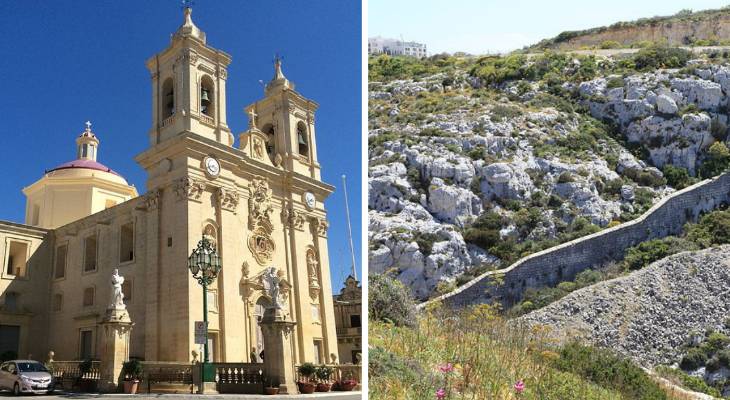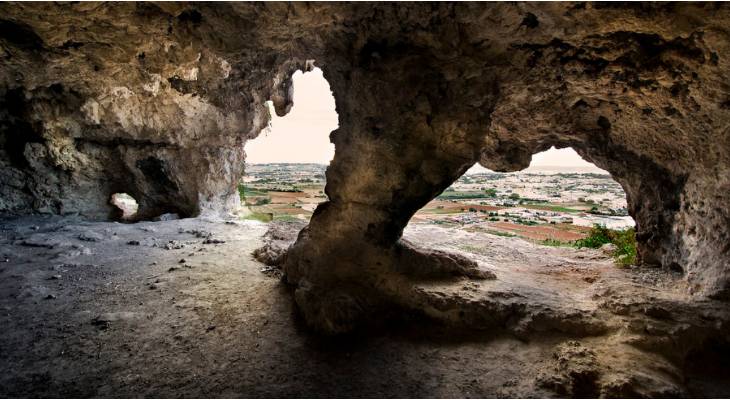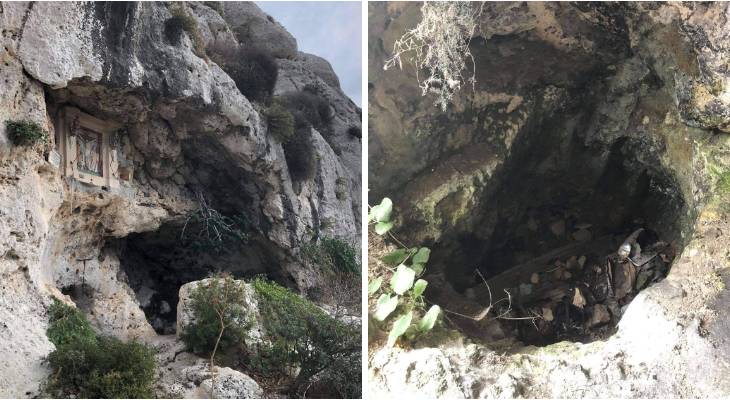Perhaps one of the best ways to learn about Malta’s ancient dwellers is to look into the places of worship that they left behind.
Whilst many of these sites are rather well-known – take a look at Mosta’s Rotunda, for example – others remain shrouded in mystery to this day.
The quaint village of Gharghur is home to way more history than it might initially let on…

It is believed that this spot was first inhabited in the Roman times, with a couple of Punic tombs having been discovered in the area. Signs of Gharghur’s previous inhabitants are aplenty – notably, back in 1955 an ancient oil press was unearthed in front of the Chapel of St. John the Baptist.
But one of the most interesting sites in all of Gharghur is undoubtedly the caves of San Brincat, hidden inside the Great Fault cliff.
Local legend has it that the San Brincat caves were uncovered after the mythical flood written about in the Bible’s Book of Genesis caused a large rock lodged in the Great Fault cliff to roll down.

Credit: K B / Flickr
Over the years, the San Brincat caves housed a number of dwellers – however the largest cave of all even served as a place of worship.
This cave houses two extremely interesting historical artifacts – a number of Greek crucifixes etched into stone and a basin, carved out of rock.

Credit: Max Camilleri / Kappelli Maltin
It is believed that the basin was once connected to a natural stream and was used to baptise believers and cleanse Christians of their sins. Years later, the basin came into disuse out of the fear of leprosy since patients had bathed in it.
Next time you’re unsure where to head to for your weekly nature walk, make sure to check out Gharghur’s historic caves!